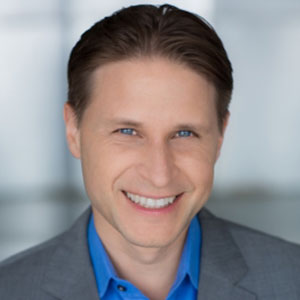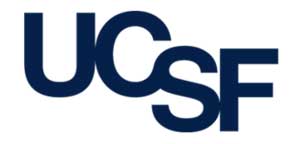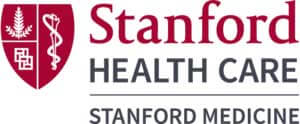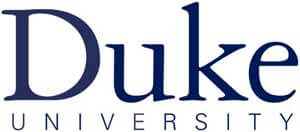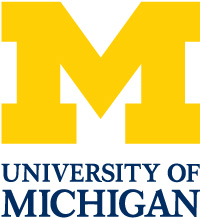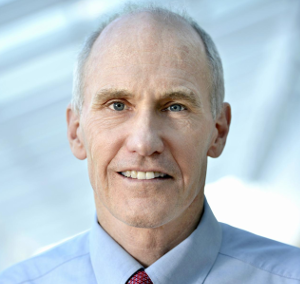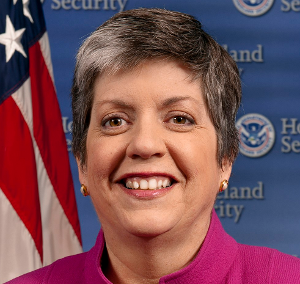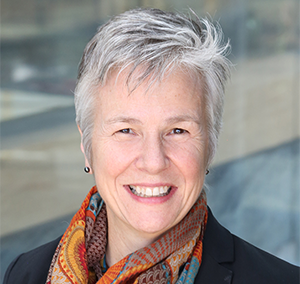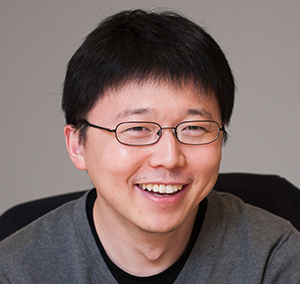Dr. Stephane Budel is a partner at DeciBio Consulting with over 18 years of combined experience in life science business consulting, entrepreneurship and academic research. He specializes in helping companies commercialize novel and disruptive technologies in the life science research tools and diagnostic spaces. He has deep genomics expertise, especially as it relates to the impact of next generation sequencing. Read his full bio.
Interview with Stephane Budel, Partner of DeciBio Consulting
Q: NGS is enhancing patient care through improved diagnostic sensitivity and more precise therapeutic targeting. Prominent examples include cystic fibrosis and cancer. What other clinical areas NGS will most likely to change the standard-of-care in the near future?
A: NGS has most drastically impacted the standard of care in non-invasive prenatal testing (NIPT) and oncology; in the latter, we are just scratching the surface, as there is more to come (e.g., tumor mutational burden [TMB]). If trials from early cancer detection companies such as GRAIL or Freenome demonstrate clear clinical utility, sequencing of healthy individuals for screening purposes may be adopted at unprecedented scale (for NGS).
While interesting applications such as HIV testing or HLA typing gain traction, I predict that rare disease diagnostics will be the next big wave. Steven Kingsmore at the Rady Children’s Institute has demonstrated the power of using whole genome sequencing in the NICU; most recently, he’s made a salient argument about the economic benefits of this technology which should assuage payors’ concerns. Last month, Rady’s launched a pilot project funded with $2M from Medi-Cal to expand whole-genome sequencing (WGS) as first line diagnosis for critically ill newborns at four participating California hospitals.
Looking further out, as the price of sequencing continues to drop, and population genomics pay dividends, genomics will likely impact all therapeutic areas. While there are clear clinical areas of unmet needs such as sepsis, NGS may percolate even unexpected conditions including trauma. Sequencing will help us decipher the complexity of immune cells, as well as the microbiome.
Q: In order to maximize the potential of NGS use in the clinic, what new genomics strategies need to be adapted?
A: For the purpose of this interview, I will focus answers on oncology, as it represents both the largest short term and mid-term opportunity, and answers are applicable to other therapeutic areas.
There are many ways to answer this question depending on the stakeholder. In all cases, it starts with demonstration of clinical utility and cost-benefit. Specialty reference labs for example may decide to focus on a niche and own it. Tactically, and from a technology standpoint, many companies are developing assays that aggregate multiple types of markers (e.g., single nucleotide variants, gene expression, insertions-deletion, epigenetics/methylation, or even protein markers) to maximize sensitivity and specificity. As Illumina continues to drive the price of sequencing (and required level of expertise) down and the sequencing itself becomes more commoditized, the value will increasingly lie in rich databases, ideally tied to outcome / phenotype. Companies such as Myriad Genetics, Foundation Medicine and others have successfully communicated this point. An industry insider recently shared with me the radical point that all healthcare systems could and should become data companies.
Many companies are also trying to leverage artificial intelligence (AI). From a business perspective, this leads to partnership opportunities, as there is an asymmetry in data availability, skillsets/expertise, and tools between various large and small players.
Q: What areas of sequencing technologies need to be improved before new applications can be introduced to clinical use?
A: Sequencing has been straightforward for a couple of years; the hard parts now are the front-end and back-end, a.k.a. the bookends. In the front end, the availability of workflow solutions that enable analysis from raw samples (such as blood, urine and saliva) could unlock multiple markets. For example, getting cell-free DNA (cfDNA) from blood draws is hard to automate, although companies such as Promega, Thermo-Fisher and Qiagen are making advances, with various degrees of integration (e.g., focus on sample preparation automation, “sample to insights”). Frankly, current solutions are not elegant, requiring multiple intermediate quantitative steps. The objective should be to simplify workflow to the point where a medical tech in a community hospital could run the experiment. In that vein, Nanostring’s Hyb&Seq may be interesting, as FFPE samples simply need to be lysed and loaded for sequencing.
In the back-end, we need simple bioinformatics solutions that provide quick and unequivocal clinical decisions. Bioinformatics pipelines are still surprisingly diverse; the FDA gets upset when the same complex tests, such as whole exome sequencing (WES), result in different treatment outcomes.
Q: What are the current challenges in the setup of large-scale NGS analysis workflows?
A: Setting up a large-scale operation is costly and requires significant technical and bioinformatics expertise. One issue is that in some sense, each sample requires individual care, especially in the bookends detailed above.
For example, many lab directors struggle with the variability of input sample quality, especially with formalin fixed paraffin embedded (FFPE) samples (e.g., variability in level of formaldehyde oxidation). On the bioinformatics side, the type of genomics variations observed can be very hard to interpret, especially structural variants.
Q: What are the obstacles to the widespread adoption of NGS in routine diagnostic testing?
A: That’s an easy one, and two sides of the same coin: demonstration of clinical utility and reimbursement.
Of course, many other obstacles exist, such as the high level of expertise needed, easy reporting, additional clarity from regulators, ethical and privacy considerations, electronic medical record (EMR) integration, etc.
Q: Is there anything you would like to share with the PMWC audience?
A: NGS is unstoppable. We are still in the early days and innovation is alive and well! Other technologies —including proteomics and digital biomarkers— will play an increasingly important role in precision medicine. We will generate an increasingly complex set of inputs and outputs that allow a clinician to build a 360-view of her patient to ultimately improve clinical outcome.
On the topic of patients and, more specifically, patient empowerment, we are seeing direct to consumer offerings play an increasingly significant role. The FDA recently authorized 23andMe to provide direct-to-consumer (DTC) reporting of genetic variants associated with medication metabolism. More immediately, this enables patients (and their clinicians) to predict response to medication; longer-term, this removes information asymmetry that traditionally exists in the patient-physician relationship, affecting standard of care. With regulatory bodies (more or less) on board, and major reference labs like Quest eliminating need to visit a physician in order to access testing (i.e., through QuestDirect), I believe the role of DTC genetics and, soon, genomics will become unstoppable as well!
The Precision Medicine World Conference (PMWC), in its 17th installment, will take place in the Santa Clara Convention Center (Silicon Valley) on January 21-24, 2020. The program will traverse innovative technologies, thriving initiatives, and clinical case studies that enable the translation of precision medicine into direct improvements in health care. Conference attendees will have an opportunity to learn first-hand about the latest developments and advancements in precision medicine and cutting-edge new strategies and solutions that are changing how patients are treated.
See 2019 Agenda highlights:
- Five tracks will showcase sessions on the latest advancements in precision medicine which include, but are not limited to:
- AI & Data Science Showcase
- Clinical & Research Tools Showcase
- Clinical Dx Showcase
- Creating Clinical Value with Liquid Biopsy ctDNA, etc.
- Digital Health/Health and Wellness
- Digital Phenotyping
- Diversity in Precision Medicine
- Drug Development (PPPs)
- Early Days of Life Sequencing
- Emerging Technologies in PM
- Emerging Therapeutic Showcase
- FDA Efforts to Accelerate PM
- Gene Editing
- Genomic Profiling Showcase
- Immunotherapy Sessions & Showcase
- Implementation into Health Care Delivery
- Large Scale Bio-data Resources to Support Drug Development (PPPs)
- Microbial Profiling Showcase
- Microbiome
- Neoantigens
- Next-Gen. Workforce of PM
- Non-Clinical Services Showcase
- Pharmacogenomics
- Point-of Care Dx Platform
- Precision Public Health
- Rare Disease Diagnosis
- Resilience
- Robust Clinical Decision Support Tools
- Wellness and Aging Showcase
See 2019 Agenda highlights:
- Five tracks will showcase sessions on the latest advancements in precision medicine which include, but are not limited to:
- AI & Data Science Showcase
- Clinical & Research Tools Showcase
- Clinical Dx Showcase
- Creating Clinical Value with Liquid Biopsy ctDNA, etc.
- Digital Health/Health and Wellness
- Digital Phenotyping
- Diversity in Precision Medicine
- Drug Development (PPPs)
- Early Days of Life Sequencing
- Emerging Technologies in PM
- Emerging Therapeutic Showcase
- FDA Efforts to Accelerate PM
- Gene Editing / CRISPR
- Genomic Profiling Showcase
- Immunotherapy Sessions & Showcase
- Implementation into Health Care Delivery
- Large Scale Bio-data Resources to Support Drug Development (PPPs)
- Microbial Profiling Showcase
- Microbiome
- Neoantigens
- Next-Gen. Workforce of PM
- Non-Clinical Services Showcase
- Pharmacogenomics
- Point-of Care Dx Platform
- Precision Public Health
- Rare Disease Diagnosis
- Resilience
- Robust Clinical Decision Support Tools
- Wellness and Aging Showcase
- A lineup of 450+ highly regarded speakers featuring pioneering researchers and authorities across the healthcare and biotechnology sectors
- Luminary and Pioneer Awards, honoring individuals who contributed, and continue to contribute, to the field of Precision Medicine
- 2000+ multidisciplinary attendees, from across the entire spectrum of healthcare, representing different types of companies, technologies, and medical centers with leadership roles in precision medicine

